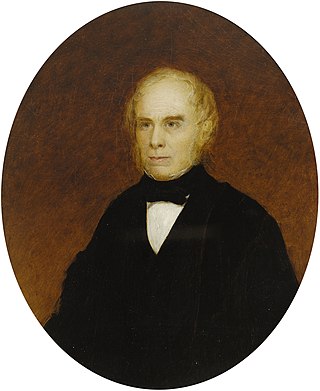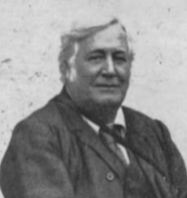
William MacGillivray FRSE was a Scottish naturalist and ornithologist.

Sir George Adam Smith was a Scottish theologian. He was the Principal of the University of Aberdeen between 1909 and 1935.

John Fleming FRSE FRS FSA was a Scottish Free Church minister, naturalist, zoologist and geologist. He named and described a number of species of molluscs. During his life he tried to reconcile theology with science.

Benjamin Neeve Peach was a British geologist.

John Horne PRSE FRS FRSE FEGS LLD was a Scottish geologist. He served as president of the Royal Society of Edinburgh from 1915 to 1919.

Thomas Allan of Lauriston FRS FRSE FSA FLS was a British mineralogist.
Prof Hyman Levy was a Scottish-Jewish philosopher, Emeritus Professor of Imperial College London, mathematician, political activist and fellow of the Royal Society of Edinburgh.
Herbert Harold Read FRS, FRSE, FGS, was a British geologist and Professor of Geology at Imperial College. From 1947-1948 he was president of the Geological Society.

James Francis Montgomery FRSE was trained as an Anglican priest and served as Dean in St Mary's Episcopal Cathedral in Edinburgh. He is usually referred to as Dean Montgomery. He was an early photographic pioneer and was one of the youngest members of the Edinburgh Calotype Club, one of the world's first photographic societies.

Sir John McFadyean FRSE LLD was a Scottish veterinary surgeon and Professor of Veterinary Science. He was Principal of the Royal Veterinary College from 1894 to 1927.

William Durham FRSE (1834-1893) was a Scottish chemist, papermaker, astronomer and academic author.

Peter David Handyside FRSE FRCSE (1808–1881) was a Scottish surgeon and anatomist. He was president of the Royal Medical Society in 1828. He won the Harveian Society Medal in 1827 and was its secretary in 1837. He was also president of the Medico-Chirurgical Society of Edinburgh in 1871.

William Jameson CIE FRSE (1815-1882) was a Scottish physician and botanist linked to the massive spread of tea plantations in North India in the 19th century.
James Kinnear WS FRSE (1810-1849) was a Scottish lawyer. His legal title was Master Extraordinary in Chancery and Commissioner of English Affairs.
Dr George Augustus Borthwick FRSE FRCSE FSA (1784-1844) was a Scottish physician and surgeon. He was Physician to the Royal Dispensary in Edinburgh and helped to establish the Edinburgh Eye Dispensary.
Dr William Francis Porter McLintock CB FRSE was a 20th-century Scottish geologist and museum curator, serving both at the Royal Scottish Museum and the Natural History Museum, London. In authorship he is known as W. F. P. McLintock.
Hugh Miller FRSE FGS (1850–1896) was a Scottish geologist, son of his more famous father, the geologist and folklorist Hugh Miller.
Dr Alexander Scott FRSE FGS (1890–1951) was a 20th-century Scottish geologist. He was an expert on clays needed for the ceramic industry.
Andrew George Stenhouse (1869-1950) was a Scottish businessman, geologist and astronomer.
Robert Stodart Wyld of Gilston (1808–1893) was a 19th-century Scottish lawyer, distiller and philosophical author.











